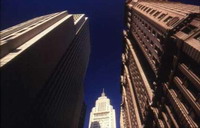Industry and agriculture improves Brazil's economy
Brazil's economy faced a 5.7 percent increase in the third quarter, thanks to big gains in the agricultural and industrial sectors.

Gross domestic product growth for South America's largest economy in the July-September period was much higher than the 4.8 percent pace predicted by economists surveyed by Dow Jones Newswires.
Growth was up 1.7 percent in the third quarter compared to the second quarter of this year, the Brazilian Census Bureau said.
For the 12-month period ending in September, GDP rose 5.2 percent. The third-quarter result prompted analysts to revise their prediction of GDP growth for 2007 upward from 4.7 percent to 5 percent or more. GDP measures the value of all goods and services produced in Brazil.
Brazil's economy expanded 3.8 percent last year, and President Luiz Inacio Lula da Silva is trying boost annual growth to 5 percent amid criticism that the nation's economy is expanding slower than the world's other major emerging economies in China, India and Russia.
Central Bank President Henrique Meirelles said the result "confirms again that the cycle of growth Brazil is experiencing is strong and sustainable."
Brazil's recent history includes frequent bouts of boom and bust economic cycles, but many experts believe those trends have been eliminated through orthodox monetary police embraced by Silva's administration after he took power in 2002 as the nation's first blue-collar president.
The nation's important agricultural sector drove the third-quarter expansion, surging 9.2 percent from the same quarter a year earlier, amid strong international demand for Brazilian soy, beef and sugar. The industrial sector expanded 5 percent, and the service sector grew 4.8 percent.
The third-quarter gain came as consumers from Latin America's most populous nation continued a buying spree that took off this year, snapping up new cars and other expensive goods because of higher salaries and easier credit brought on by falling interest rates.
The cost of credit is easing in Brazil because of falling interest rates, and the trend is expected to continue. Brazil's benchmark Selic interest now stands at 11.25 percent, down from a high of 19.75 percent in mid-2005.
The GDP result helped drive the main stock index on Sao Paulo's Bovepsa Exchange up 1.7 percent Wednesday afternoon, to 65,597.
Subscribe to Pravda.Ru Telegram channel, Facebook, RSS!


